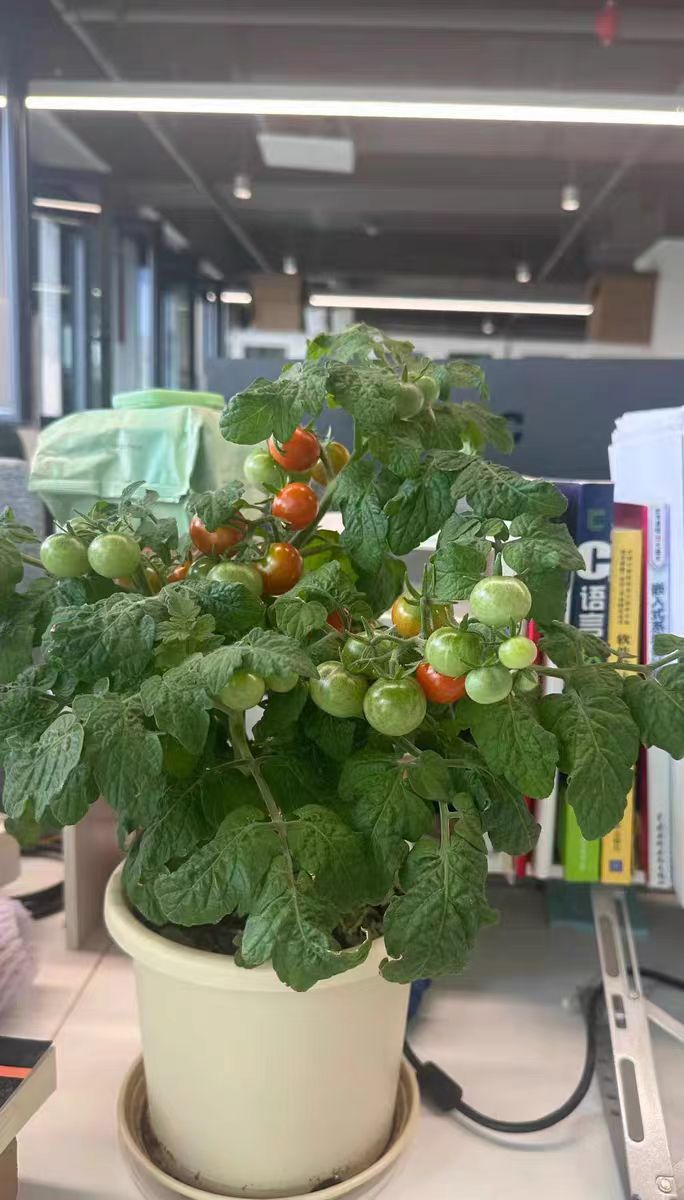When growing cherry tomatoes at home, there's no greater sense of achievement than seeing bright red fruits hanging among the green leaves. However, many people may wonder whether their homegrown cherry tomatoes need pruning. In fact, pruning cherry tomatoes is as necessary as trimming flowers and plants.
Cherry tomatoes have extremely strong growth vitality. If left unmanaged, lateral branches will grow wildly, and soon the entire plant will become thick and dense, blocking air circulation. As a result, inner leaves cannot receive sunlight, hindering photosynthesis. The fruits will also become small and sparse due to nutrient competition, while the enclosed environment easily attracts pests and diseases. Therefore, learning to prune can make cherry tomatoes grow stronger and bear more delicious fruits.
What should be prepared before pruning? First, find a sharp pair of scissors or gardening shears, and remember to disinfect them in advance with alcohol or carbendazim solution to avoid introducing pathogens to the plant during pruning. Also, prepare clean rags or paper towels to wipe the scissors and treat the plant's wounds, ensuring a clean operation.
Next, let’s discuss the specific pruning methods. When the cherry tomato seedlings are successfully transplanted and have 5-6 true leaves, the first pruning can begin. This stage mainly involves topping (pinching). Locate the topmost leaf on the main stem and cut off the growth point above the leaf. This encourages the plant to grow more lateral branches and bear more fruits in the future. However, there’s a small trick: for determinate varieties (those that stop growing after reaching a certain height), topping can be delayed or even omitted. For indeterminate varieties, timely topping is essential to prevent the plant from growing too tall and becoming difficult to manage.
When cherry tomatoes enter the flowering and fruiting stage, lateral branches will rapidly emerge from the leaf axils between the main stem and leaves. When these lateral branches grow to 5-10 cm in length, they should be promptly removed, a process called suckering. To remove lateral branches, gently pinch the base and twist them off, or use scissors to cut them, taking care not to damage the main stem. If the plant is particularly robust, 1-2 strong lateral branches can be retained on the main stem to become fruiting branches, but avoid leaving too many to prevent overcrowding. At the same time, old, yellow, and diseased leaves at the base of the plant should be removed, as they are non-functional, waste nutrients, and prone to pests and diseases.
As cherry tomatoes begin to bear fruit and the plant is laden with small fruits, it’s time to thin the branches and leaves. Cut off weak, non-fruiting branches and crossing branches that block light, directing nutrients to the fruiting branches. For leaves, remove old leaves and those that shade the fruits, allowing more sunlight to reach the fruits and make them redder and sweeter. If the plant grows too tall, to prevent lodging and facilitate management, cut off the growth point after retaining 2-3 leaves at the top to control its height.
Finally, during the late fruit harvest period, as the plant ages, leaves turn yellow, and branches wither, a heavy pruning can be performed. Only retain about 10-15 cm of the main stem at the base and cut off the upper branches. This can stimulate the plant to grow new lateral branches, potentially bearing another crop of fruits.
After pruning, proper care is essential. Water the plant promptly to keep the soil moist, but avoid overwatering that causes root waterlogging. Apply appropriate fertilizers, such as N-P-K compound fertilizer, to replenish nutrients and promote plant growth and fruit development. Regularly monitor the plant and address pests and diseases immediately. With such care, your cherry tomatoes will remain healthy and bear abundant, high-quality fruits.
Do cherry tomatoes planted at home need pruning?

Share with
Tagged in :




Leave a Reply